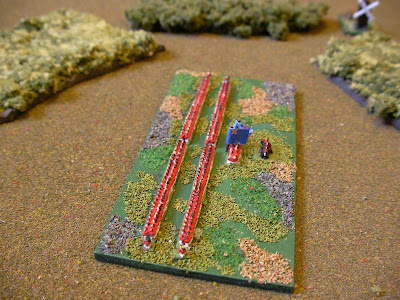 It could be said that compared with the disparate and weakened forces of Montcalm, General James Wolfe was faced with an embarrassment of riches at the opening to the campaign to take Quebec in 1759.
It could be said that compared with the disparate and weakened forces of Montcalm, General James Wolfe was faced with an embarrassment of riches at the opening to the campaign to take Quebec in 1759. However, after two months of besieging the city, with reverses such as the battle at Montmorency where an ambitious amphibious landing by a force of converged grenadiers failed on the shoreline, and with the commanders riven by growing frustration over the course of the overall operation, It might appear that all was not well in the English camp.
The failure to bring the French to a decisive battle exposed the differences in character and vision between Wolfe and his three brigadier-generals, and has led some commentators to view the battle of the Plains as a fatalistic 'last roll of the dice'; yet in terms of the cohesion, character and size of the English force, Wolfe had a distinct advantage over his adversary. This may have been mitigated by a weakening in morale, yet actual losses in terms of manpower so far had been relatively light, and despite a high expenditure of shot, powder and shell, they remained well supplied and supported by a large naval force.
Disgruntled subordinates aside, the task force assembled for the pre-dawn amphibious assault on the 13th of September was well drilled, briefed, and superbly organised, from the provision of artillery and naval support, to a diversionary demonstration upriver of the city.
Some best of British luck saw the landing point relatively lightly defended, and once the Samos Battery and guard post had been surprised and taken by coup de main (as we see in the photo above!), Wolfe's force quickly formed into a line stretching across the Plains of Abraham from the cliff edge as far as the road to Sainte Foy, facing the walls of Quebec over the rising ground in the distance, awaiting the French response.
At the extreme right of the line, the Louisbourg Grenadiers, seen in a previous post, held the flank, and to their left was Bragg's 28th Regiment of Foot, consisting of 591 all ranks, eight fusilier companies and one each of Grenadiers and 'Light' troops:
Next in the line were Kennedy's 43rd Regiment of Foot, 715 all ranks, and the home to Captain James Knox, whose eye witness account of the campaign and battle gives an excellent perspective on the way of warfare as practised at the time; read a version online here (scroll down the page):
Next, in the centre, were the 679 men of Lascelle's 47th Regiment of Foot, whose devastating double-shotted volley did so much damage to the dense columns formed by the French regiments of Bearn and Guyenne, as one eye-witness is said to have put it, "comme un coup de cannon...":
To their left stood the 78th Regiment of Foot, Fraser's Highlanders, who mustered some 1,269 all ranks at the battle, and followed up the fleeing French with broadswords drawn and belted plaid a-flying in the wind, in that manner so beloved of wargamers!
On the Left wing stood Anstruther's 58th regiment of Foot, 616 all ranks, to whose rear Brigadier General Townshend was stood, whose account of the battle can be found here:
Formed 'en potence' to the main line, (drawn back at a right angle to the left) and parallel with the Ste. Foy road and woodlands beyond in order to guard against the depredations of French skirmishers there, was initially a large part of Amherst's 15th Regiment of Foot, which also had a number of widely spaced companies in the rear of the main line as a reserve; formed of 594 all ranks:


This formation was supported by two battalions of the 60th Royal American Regiment of Foot, (2nd and 3rd Battns) which flew the flag for the Colonies during the campaign, as the only other Americans present were the men of the New England Ranger companies, and a volunteer corps of pioneers.
Finally, to the rear of the Louisbourg Grenadiers, and similarly drawn up at right angles to the main line to prevent an outflanking move by Canadian Irregulars along the cliff top to the landing area, were the 899 men of Otway's 35th Regiment of Foot:
Guarding the rear, and keeping communications open with the landing zone, light troops (principally the battalion of 300 or so chosen men of Howe and Dalling), and some provincial rangers kept watch:
Tomorrow, the Battle of the Plains of Abraham re-created with 2mm miniatures......









No comments:
Post a Comment